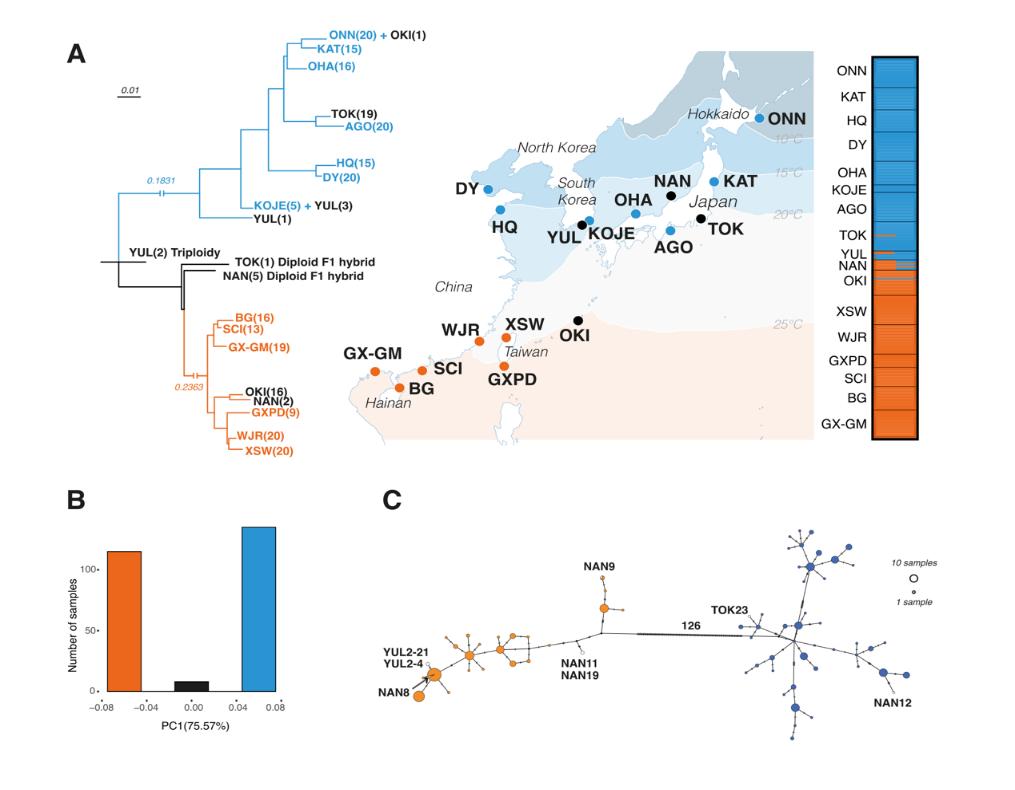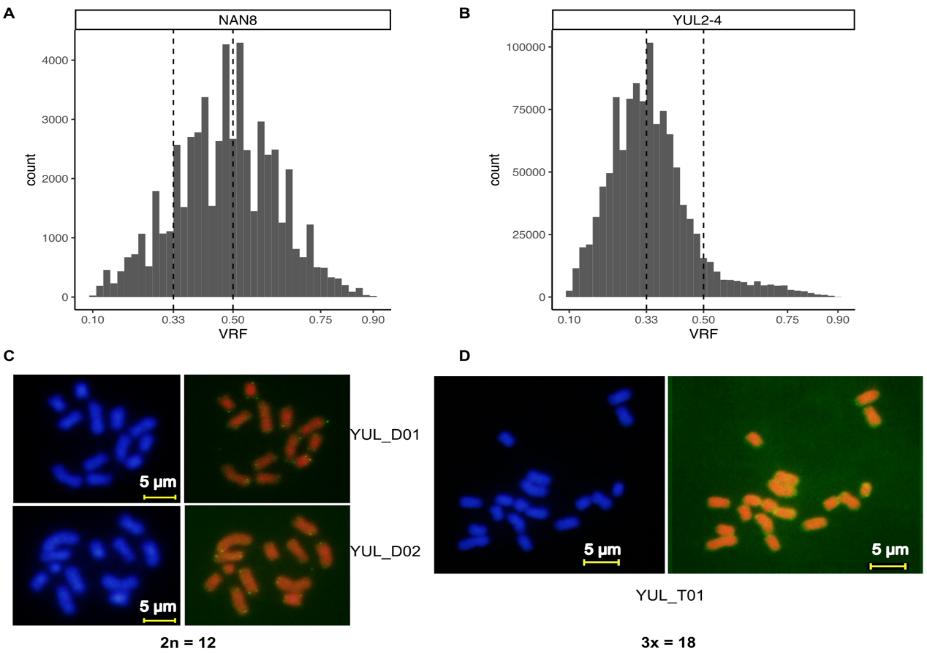
Seagrasses, foundational species in coastal ecosystems worldwide, are surprisingly few in documented diversity—with only around 70 species identified globally, despite their widespread distribution and ecological importance. Complicating matters, their high phenotypic plasticity within species makes precise classification challenging.
Against this backdrop, a research team led by Prof. ZHOU Yi from the Institute of Oceanology of the Chinese Academy of Sciences (IOCAS), in collaboration with researchers from Germany's GEOMAR Helmholtz Centre for Ocean Research Kiel and other institutions, has discovered cryptic speciation within Nanozostera japonica—a seagrass species common across the Northwest Pacific. The findings were published in New Phytologist.
N. japonica is rare among seagrasses for thriving in both temperate and tropical-subtropical coastal zones. Native to the Northwest Pacific, it spread to North America's Pacific coast in the early 20th century via oyster shipments. Its phenotypes vary sharply across geographic regions, and prior research using microsatellite markers revealed striking genetic differences between northern and southern populations—hinting that what is currently classified as N. japonica might include multiple species.
To test this hypothesis, the team assembled high-quality, chromosome-level reference genomes from N. japonica samples collected in northern and southern China. They then conducted whole-genome resequencing of 17 populations spanning the Western Pacific. Genomic analyses showed the northern and southern clades diverged approximately 4.16 million years ago (Ma). Notably, the southern clade is more closely related to its European sister species N. noltii, with a more recent split around 2.67 Ma.
"The genetic divergence between these two clades exceeds typical intraspecific differences," noted Dr. ZHANG Xiaomei.
The study also identified hybrids between the clades in their contact zone, all of which are first-generation diploids or triploids—with no evidence of higher-order hybrids. This pattern strongly indicates reproductive isolation, a key marker of distinct species.
Further comparative genomic work revealed a massive ~42 megabase (Mb) chromosomal inversion with fixed differences between the clades, likely contributing to their reproductive separation.
"This work shows that what we currently recognize as N. japonica actually comprises two distinct species," said Prof. ZHOU. "It provides critical insights for future seagrass classification and conservation strategies."
This marks the first time cryptic seagrass species have been identified using comprehensive population genomics. The study suggests seagrass diversity may be significantly underestimated, underscoring the need for more extensive population genomic research on these ecologically vital organisms.

Genetic population structure of the Nanozostera japonica species complex. (Image by IOCAS)

Co-existence of diploidy and triploidy within a population of Nanozostera japonica. (Image by IOCAS)

86-10-68597521 (day)
86-10-68597289 (night)

52 Sanlihe Rd., Xicheng District,
Beijing, China (100864)

